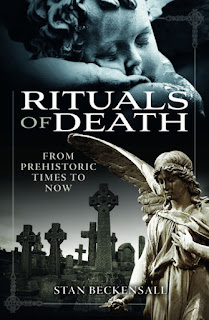Wars of the Roses The People, Places and Battlefields of the Yorkists and Lancastrians written by Paul Kendell and published by Frontline Books - £25 - Hardback - Pages 224
This book is an exploration of the buildings, monuments, towns and battlefields of that turbulent era across both England and Wales – places that can still be visited and experienced today. The stories of the great battles of St Albans, Stoke Field, Wakefield, Towton, Barnet, Tewksbury and, of course, Bosworth, are told along with beautiful photographs to help guide the reader round these important sites, as well as the dozens of smaller engagements where the supporters of the Houses of York and Lancaster fought and died.
Here are castles and manor houses galore, all of which played their part in this protracted struggle for the throne of England, such as Richard of York’s imposing powerbase of Ludlow Castle and the magnificent Tudor stronghold of Bamburg. These are compared with the scant remains of Fotheringhay Castle, the birthplace of Richard III – the man whose remains were so dramatically uncovered in Leicester – and Micklegate Bar, York, was where Richard’s head was placed on a spike.
We see the Clocktower of St Albans and ‘Gabriel’ the bell that was rung in 1455 alerting of the Yorkist advance, as well as the Tower of London where Henry VI met his death and the possible burial place of the two princes.
These, and scores of other places, monuments, plaques, buildings and battlegrounds, represent not only a journey across England and Wales, but a journey back in time to the bloody conflict that was the War of the Roses.
A fascinating book in which the author Paul Kendall introduces us to another layer of the story of the War of the Roses, now most of us have read or have been told about the War of the Roses, but what happens here is that we are being lead and shown to the relevant places and people involved. This I believe helps us to better understand the story and those involved because we are being given the pictures and photos that help us understand what went on better. I found the book similar in style to the History in 100 Objects type books, but this was a little more focused. A great book and I’ve learnt so much from it. I would highly recommend this book to anyone.











